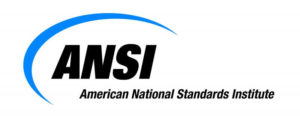We perform comprehensive ANSI annual inspections with mobile on-site services to reduce downtime, lower costs, and ensure the safety of your operations.
OSHA mandates annual comprehensive inspections for all mobile equipment over 2000 lbs. capable of moving or hoisting loads horizontally or vertically using a hook or winch. These inspections include a detailed examination of carriers, undercarriages, car bodies, gears, shafts, control mechanisms, operator stations, boom structures, sheaves, shafts, drums, hoist ropes, and pendant support systems. Schedule your Annual inspection for mobile cranes and aerial lifts.
Our inspectors are highly qualified, meeting rigorous performance requirements with documented experience. They provide impartial, thorough mobile crane inspections to ensure your equipment is safe and compliant.
During our mobile crane inspections, we:
Choose Utility Equipment Consultants for professional, reliable mobile crane and aerial lift inspections that prioritize safety, compliance, and customer service.
The short answer is, YES.
Part of the updated ANSI A92.22 standards, now in effect in the United States, include requirements for annual machine inspections (AMI) on mobile elevating work platforms (MEWPs).
Specifically, the standards state the following as pertaining to the completion of an AMI:
“Owners shall ensure an annual inspection is performed no later than thirteen (13) months from the date of the prior annual inspection. The inspection shall be performed by a person qualified to inspect the specific make and model of MEWP. The inspection shall include all items included in the frequent inspection plus items specified by the manufacturer for an annual inspection, to include manufacturer’s bulletins. The inspection shall verify that the MEWP is registered with the MEWP manufacturer and that any open safety-related bulletins are addressed as part of the inspection. The MEWP shall not be placed back into service until all malfunctions and problems identified in the inspection have been corrected.”
The Reliable Performance
A thorough inspection leads to lifts that operate reliably, preventing unexpected downtime. After service, lifts function with precision, as any potential safety hazards have been addressed.
Cost-Efficiency
Regular inspections can identify issues early, leading to cost savings on repairs. Certified checks can extend the lifespan of your equipment, optimizing your investment.
Operational Confidence
With each lift passing rigorous inspection criteria, you gain confidence in your equipment’s performance, ensuring safety and efficiency in your operations.
Compliance Assurance
Our service confirms that your lifts meet all current ANSI regulatory standards, keeping your operations compliant and up to date.
Regular inspections are crucial to identify any potential issues with your aerial lift equipment before they lead to downtime or, worse, accidents. Recognizing the warning signs early can be the difference between a minor repair and a major operational halt.
Signs your Aerial Lift Needs Inspection:
These symptoms could point to underlying issues with the lift’s hydraulics, electrical systems, or structural components.
Catching these early, with the help of our specialized inspection services, prevents bigger problems and ensures compliance with safety regulations.
OSHA regulations are laws, which means they are subject to government enforcement.

OSHA is the government agency in charge of making rules for aerial lift usage
ANSI standards, however, are not laws.
Instead, they are the industry guidelines for aerial lift design, operation, and safety.

ANSI is the organization that devises industry rules for the design and use of aerial lifts
So, does that mean you don’t have to follow ANSI’s standards?
Not necessarily.
OSHA often incorporates ANSI rules by reference, which means they can carry the force of law.
So ensure you follow both OSHA and ANSI’s rules on aerial lifts, including inspections.
If you’re wondering, “What are the OSHA aerial lift annual inspection requirements?” the answer is that OSHA doesn’t specify.
Instead, the ANSI establishes the annual inspection requirements.
And recall that OSHA sometimes incorporates ANSI rules into the law.
So, you should follow what ANSI says on the topic.
Now, what does ANSI say about annual inspections?
They state annual inspections must be performed at most thirteen months after the previous inspection.
CALL UEC TODAY! 407-256-6761

Equipment we test


Avoid Interruptions.
Don’t get shut down on the job! Schedule your annual testing and inspection today.
©2026 Utility Equipment Consultants | #1 On-site Services | Powered by Amiga Web Design